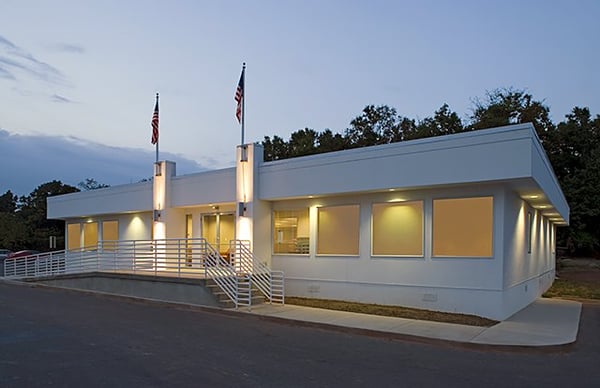
Modular buildings themselves are green! The Modular Building Institute explains that modular buildings in and of themselves are green buildings because they have greater flexibility, are reusable, have less material waste and improve air quality. This is all just in their innate building process.
Leadership in Energy and Environment Design (LEED) has levels of what qualifies as green (or VERY green) that you can follow to make your modular more environmentally friendly than ever.
Their dividing factors are:
Prerequisites:
Foundational requirements – every building has to have these.
Credits:
What sets your building apart – the additional features that earn points.
Points:
The rewards you get for how many credits your building has.
Green Building Features Checklist
Keep in mind, credit for implementing green building features won’t count towards points earned if the prerequisites are not met. Here’s a list of the prerequisites required before credit before the features below can be given. All these features can be found through the Modular Building and USGBC’s LEED™ Building Rating System.
Roofing
The material chosen for roofing can affect the level of sustainability through the “solar reflective index or SRI in the roofing material(s)."
Site Development – Protect the Habitat
In a scorecard put together by LEED to count how many points are available through green credit, “modular components and complete modular building units are fabricated off-site and delivered by a variety of over the road transport, making it possible to achieve tighter site control.” Construction that limits site disturbance is recognized as sustainable.
Water Fixtures
“Utilizing fixtures that out-perform the allowable water quantities listed in the Energy Conservation Act of 1992” is a great way to go above and beyond LEED prerequisites. Applying fixtures that reduce 50% or more in necessary portable water for waste transportation increase the sustainability of a modular building.
Structural Insulated Panels
Also known as SIPS, Structural Insulated Panels can produce relatively high R-values, or provide high resistant, and low infiltration rates if fabricated and constructed with good quality control. Having good quality control keeps the need for more energy use low to control the quality of the area.
Stud Frame Construction
“Steel and aluminum construction for modular buildings can also produce energy efficient units if care is taken to ensure proper installation techniques and air sealing." Ensuring that air is sealed through installation is a key factor in saving energy and making a green building aware of energy consumption.
Windows
Just like tight studded frames, having high-quality windows and doors help with controlling the area and not wasting energy to maintain air quality.
Certified Wood
Modular buildings can use wood for structural framing, sub-flooring, wood doors and finishes like base trim. Repurposing certified wood - which is approved by the Forest Stewardship Council’s Principles and Criteria - helps to save and sustain the environment.
Increased Ventilation
Additional ventilation and effective filtration help to decrease residual pollution with only a thirty percent increase in ventilated air through the building. Providing healthy air in your modular building is yet another way to provide sustainability.
Low Emitting Materials
In the past, the modular building industry has been looked down on for its inability to provide “usable habitats with acceptable indoor air quality.” Industry leaders Modular Building Institute (MBI) and the U.S. Green Building Council (USGBC) stated, “Despite the fact [listed above], these features have proven to be very possible in modular environments.” The list below are where low emitting materials can be implemented to meet LEED Green Building standards.
- - Adhesives and Sealants
- - Paints and Coatings
- - Flooring Systems
- - Composite Wood
- -Agrifiber Products
Green Buildings Today
“Since the Leadership in Energy and Environment Design (LEED) Green Building Rating System began in 1998, the design criteria above have grown to encompass more than 14,000 projects in the United States and 30 countries.” - Wilmot Modular
Why Consider Green Features for your Modular Building?
There are many incentives that you, your modular building, and your business can enjoy by implementing green building features! Incentives include:
- - Tax credits
- - Tax breaks
- - Density bonuses
- - Reduced fees
- - Priority or expedited permitting
- - Free or reduced-cost technical assistance
- - Grants and low-interest loans
The list goes on!
What's the first Step?
In the initial consultation with Wilmot Modular, we will talk through the anticipated scope of work , which will be instrumental in determining the project delivery method for the project.
If you desire to pursue incorporating green strategies, it will involve assembling an integrated project team of design professionals. Prior to schematic design, our goal is to conduct several meetings with the Design Team to optimize the integration of the expertise of all the members involved with building design, construction and operations.
These high-level meetings are intended to clarify the owner and stakeholders’ values, aspirations and requirements so we can generate potential strategies for achieving performance targets.
Wilmot Modular takes the initiative to ensure your energy efficient concerns and needs are met. See how we've served our customers with custom modular projects.









